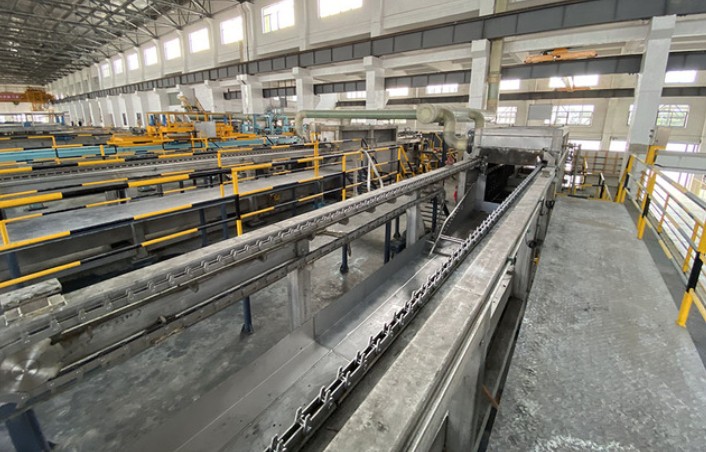NEWS&EVENTS
Home > News&Events > Company news > What are the key technical parameters of electrolytic cells for antimony smelting?
As the core equipment of antimony smelting, the technical parameters of the electrolytic cell directly determine the production efficiency and product quality. The following are the key parameters to be controlled:

1. Current density: controlled within the range of 200-350A/m². Too high will lead to anode passivation, increased cell pressure, and increased energy consumption; too low will reduce production capacity. It needs to be dynamically adjusted according to the grade of antimony concentrate to ensure the balance between metal deposition rate and quality.
2. Electrolyte composition: It needs to be precisely controlled, with sulfuric acid concentration maintained at 80-120g/L, antimony ion concentration maintained at 80-120g/L, and temperature controlled at 25-35℃. These parameters jointly affect the conductivity of the electrolyte, the migration rate of antimony ions, and the quality of cathode deposition.
3. Cell structure design: titanium or lead-silver alloy anodes and stainless steel cathodes are used to ensure corrosion resistance and conductivity. The inter-electrode spacing is controlled at 80-120mm, which not only ensures uniform current distribution and avoids the risk of short circuit, but also the cell volume needs to match the daily processing volume.
4. Circulation system: The electrolyte circulation volume needs to reach 1.5-2 times the tank volume per hour to ensure uniform concentration. A variable frequency pump is used to control the flow rate to avoid nodules on the cathode surface. At the same time, an intelligent temperature control device is equipped to compensate for heat loss in real time.
By integrating the above parameters, automatic control is achieved, and operating indicators such as tank pressure fluctuations (within ±5%) and current efficiency (≥92%) are regularly tested to ensure that the electrolytic cell is always in the optimal working condition and achieve efficient, low-consumption and stable antimony metal production.